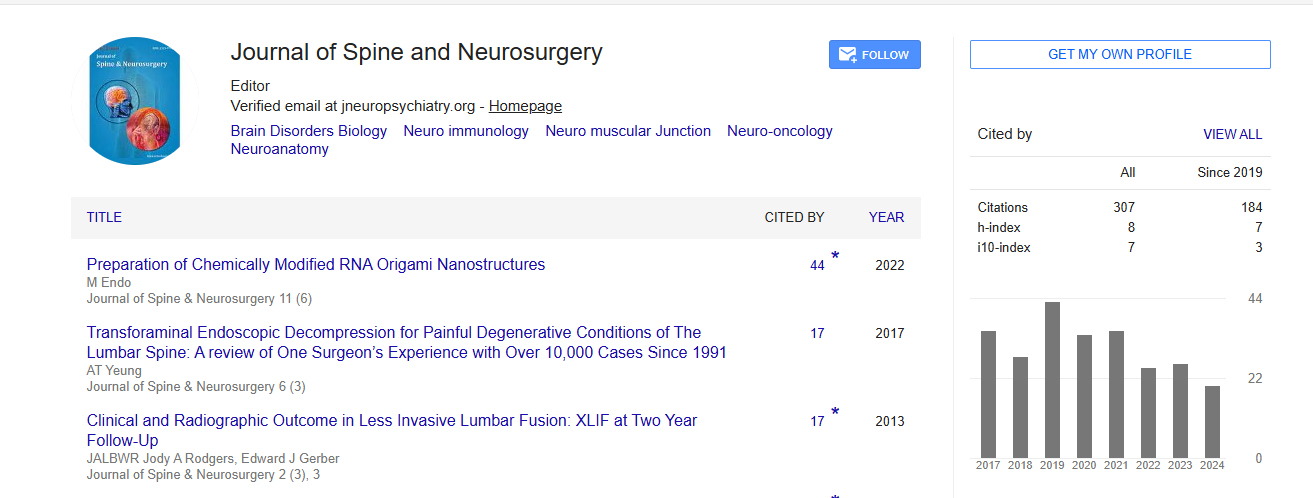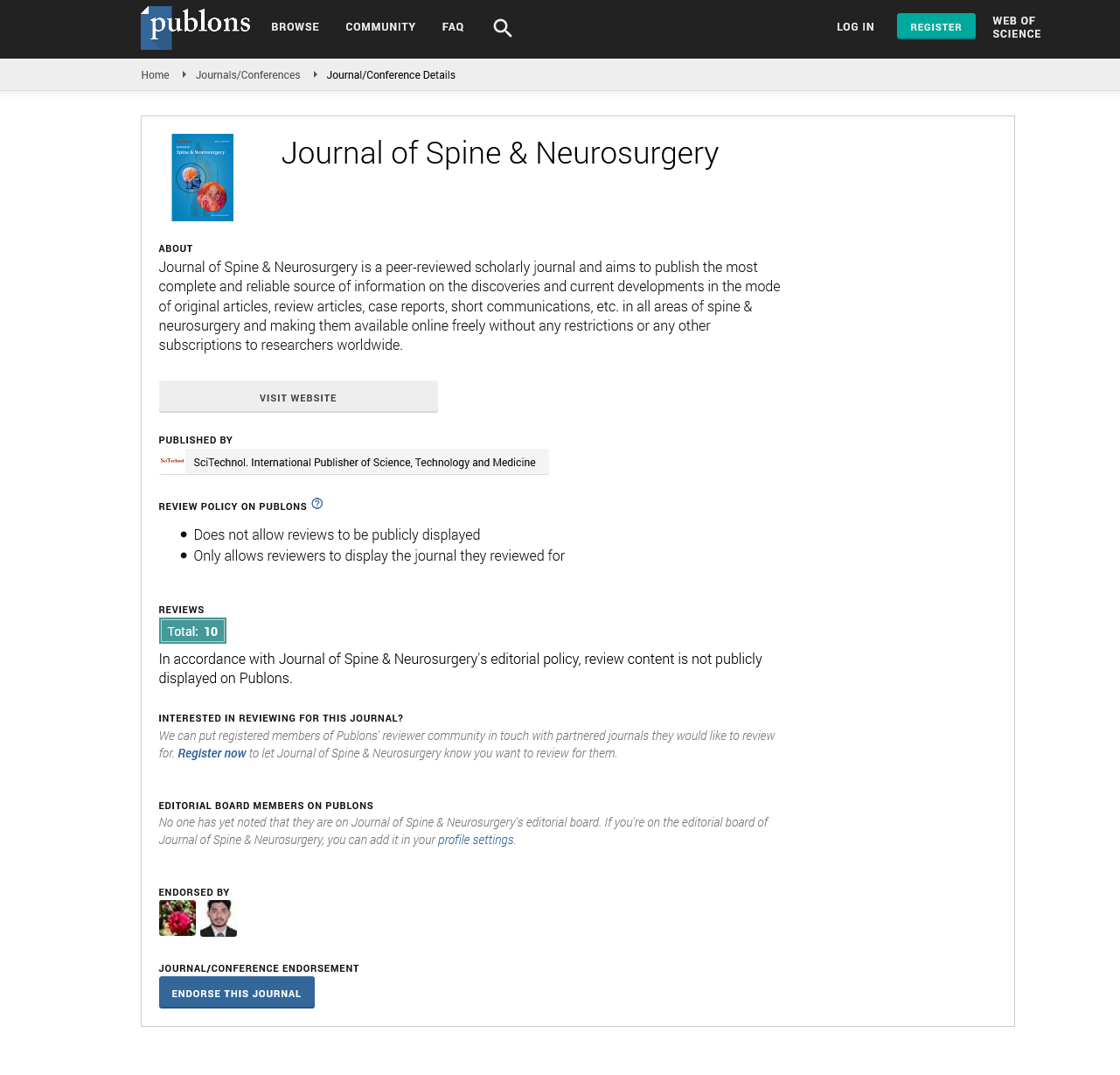Spinal Navigation with 3D-Imaging as routine tool in Spine Surgery
Nils D Haberland
Neuro Spinal Hospital, UAE
: J Spine Neurosurg
Abstract
Background: Pedicle Screw Fixation is an established technique for vertebral fusion. However, it is important to ensure that the pedicle screws remain in the main axis of the pedicle, and do not invade the vertebral foramen or spinal canal. Despite the various benefits of Spinal Navigation in pedicle screw insertion, there is still a high rate of screw misplacement, which ranges from 2.7% to 14%. Thus, we cannot recommend that navigation with registration based on anatomical landmarks and surface matching as a standard technique particularly in cases of an unstable spinal fracture. The term ‘screw misplacement’ is taken to mean a perforation of the pedicle and vertebra by the pedicle screw of more than 2 mm. This presentation presents an improved method of intraoperative navigation, using marker screws for registration implanted in the vertebrae at the beginning of surgery, before acquisition of the data set used for intraoperative navigation. This has become a practical possibility due to the availability of intraoperative CT and provides better application accuracy than techniques based on anatomical landmarks. Methods: All of the operations were performed with the aid of a Tomoscan M Mobile CT System (Philips Medical Systems, Eindhoven, and the Netherlands). The system comprises a mobile gantry, a mobile patient examination table, and a mobile workstation. Infrared sensor navigation systems were used: the SurgiGATE (Medivision, Oberdorf, Switzerland). All of the surgical operations were performed with the patient positioned on the mobile table of the CT system or on a fixed carbon table. Following dorsal preparation of the vertebral region, the surgeon implanted small titanium screws in the vertebrae. The screws served as fiducial markers. Image data acquisition and image-to-patient registration were performed after implantation of the marker screws. The pedicle screws were inserted using the navigation system, and the position of all implants was confirmed by intraoperative CT scans. Results: The combination of intraoperative computerized tomography and spinal navigation allows easy navigation with a high application accuracy of 0.8 mm ± 0.4 mm (SD) at the target point (measured in experiments with a plastic spine model). In an experimental study of percutaneous spinal navigation, we reached an application accuracy of 1.2 mm ± 0.6 mm (SD). 304 patients with various spine disorders have been operated upon using the technique described, and 1438 pedicle screws have been inserted. The pedicle screw misplacement rate was only 0.9% but using the navigation technique without CT (n=21) we achieved a misplacement rate of 9.2% Conclusions: Pedicle screw fixation using intraoperative CT and fiducial marker screws provides much better application accuracy than the previous technique using anatomical landmarks. The possibility of performing an intraoperative quality check on demand markedly improves the safety of these procedures. We presume that the Minimally Invasive Navigation-Guided Percutaneous Technique will become increasingly important in the future and will certainly be employed in combination with the application of robots working more precisely than by free-handed navigation.
Biography
Nils D Haberland is a German Spine and Brain Surgeon with over 33 years of experience in the management of all Spinal and Brain Pathologies; he is the pioneer in Minimally Invasive Spine Surgery (MISS), and Spinal Navigation in combination with Intraoperative Computed Tomography. This technique is state of the art in Spinal Surgery was first published worldwide in 2000 in the United States by himself. He was also one of the first in Germany to perform robot surgery on the Brain.
 Spanish
Spanish  Chinese
Chinese  Russian
Russian  German
German  French
French  Japanese
Japanese  Portuguese
Portuguese  Hindi
Hindi 
